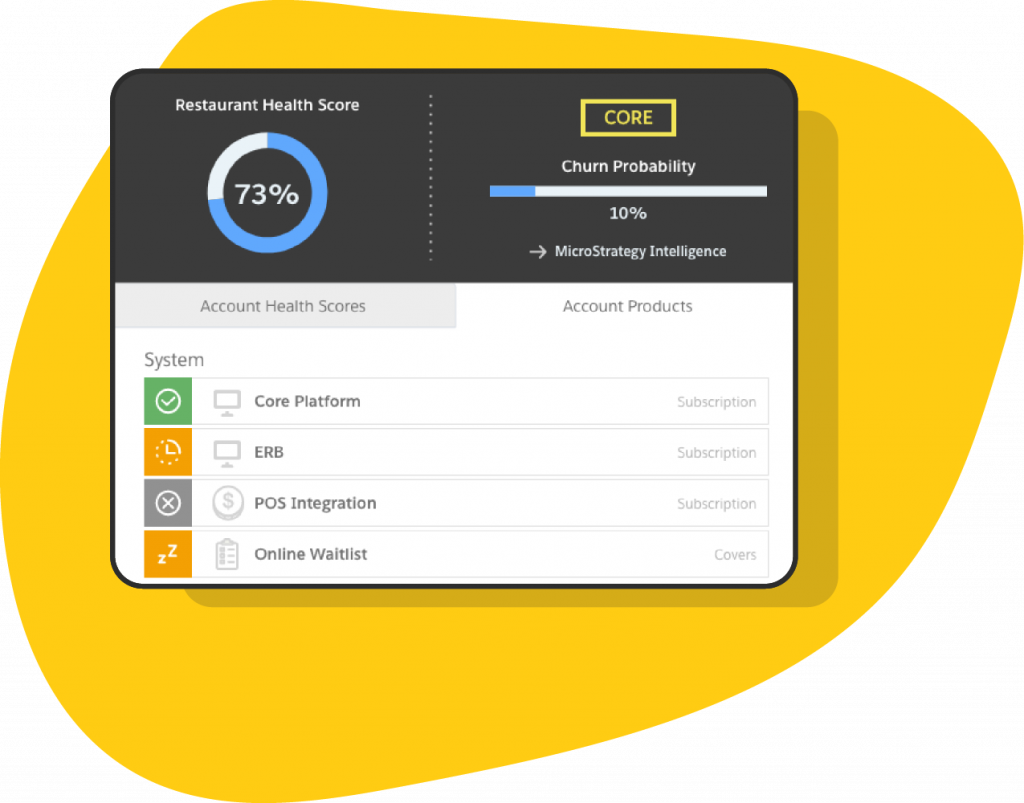Account Health
USER PERSONAS
Inside Sales
Customer Success
Customer Service
ABOUT THE CLIENT
An international B2B SaaS company, selling various subscription and per-transaction services to restaurants looking to fill their open tables.

Challenge: Opaque Account Health
Sales and Service organizations need real-time insights into their accounts’ health.
An existing Product List component only lists out the names of products a customer has signed up for. Additional product and account information must be gathered through manual tasks across various business systems.
Approach: Insights Across Functions & Processes
The client stakeholders already had some ideas for functionality and data to surface within this component. Their initial vision was a new product list with install status, renewal dates, and subscription costs.
Through discovery with stakeholders and users, we were able to identify that this component would be useful in Sales and Service orgs across multiple touch-points. I also identified that information like install dates were secondary to the current status. This led to the shift from a Product List to an Account Health app.


Solution: From Snapshot to Microscope
The component is split into three parts; a header and two tabs. The header contains the highest level data. This is data that all users should check before getting into a new sales or service cycle with the customer.
The Account health Scores tab pulls in four more commonly-accessed health metrics from MicroStrategy. This information is useful for checking readiness for new subscriptions.
The Account Products tab has the most specific data – listing out products, product types, and current install status (with hover tooltip). With the same intention as with the section tabs, each product is designed as an expandable card. The cards expand to show more granular details, like relevant dates and prices.
Project Notes
- Much of the data for this component came in from outside sources, requiring an integration layer. Being so data-heavy, we realized that loading time could be an issue. My solution was to separate the data between a header that is always visible, and split account health and product status data into tabs. Depending on where this component shows up in Salesforce, an admin can choose which tab, if any, is open by default.
- Some of my UI decisions were informed by the UI of the outside systems, giving users the same visual cues across experiences.
- By identifying additional personas and their needs, this went from a tool within an Account record to one that could add value to Opportunities, Cases, and other milestones across the customer lifecycle.
